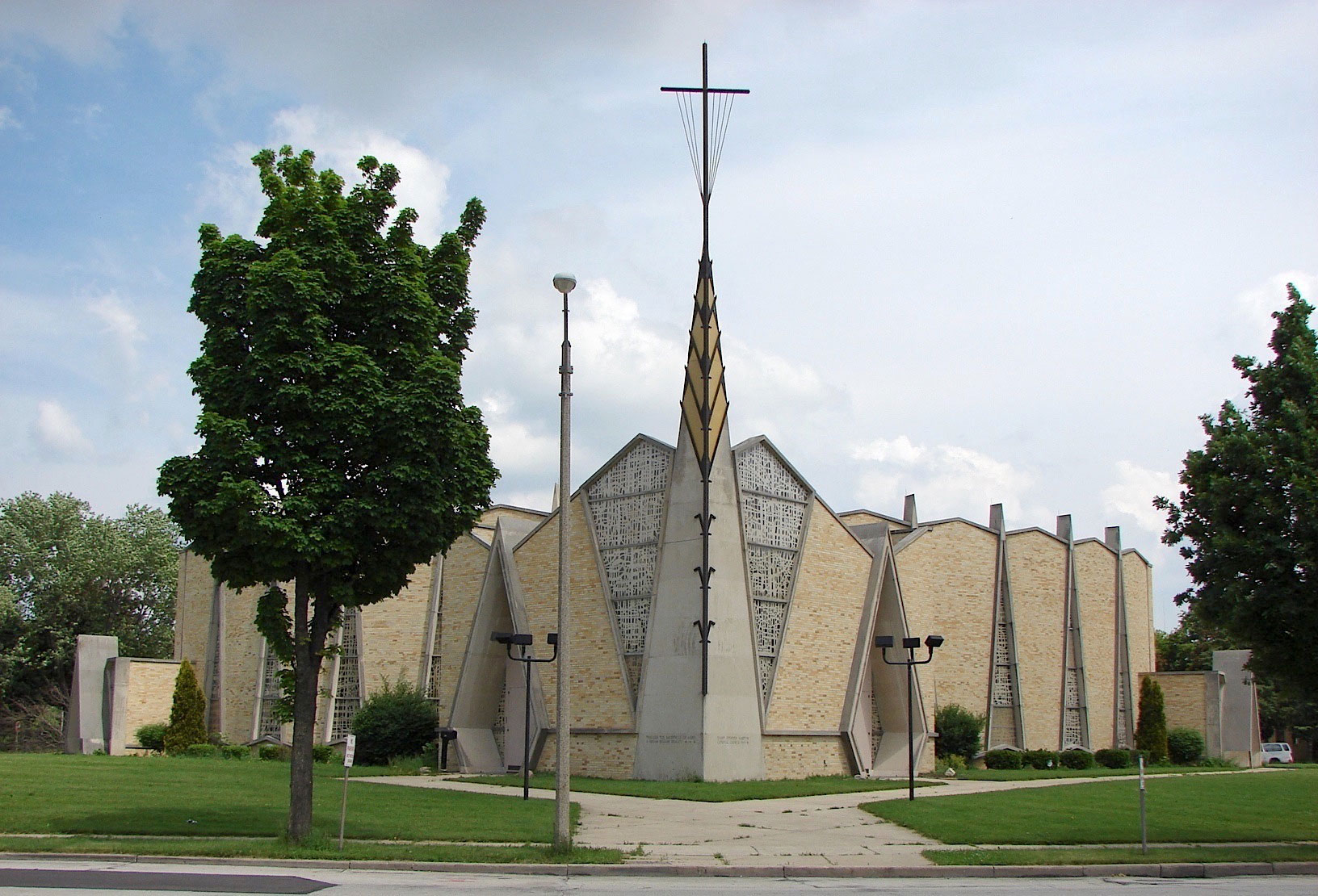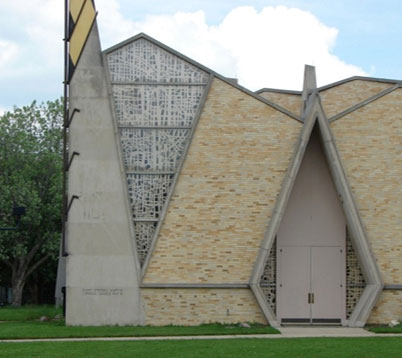70. St. Stephen Martyr Catholic, 1969
Now Greater Faith Temple Apostolic Church
4260 North 51st Boulevard (between Hope Avenue and Marion Street)
Architect: Henry Slaby

The Catholic Archdiocese of Milwaukee established St. Stephen Martyr Parish in 1907 to serve the city’s Slovak immigrants and their American-born descendants. Prior to that time, Milwaukee’s Slovak Catholics worshiped at the predominantly Czech (then called Bohemian) church of St. John de Nepomuc at 4th and Cherry Streets. The new parish acquired an existing church at 5th and Walnut Streets, just a few blocks to the northwest of St. John de Nepomuc. (Both of these churches have been demolished.)
Shortly after World War II, the parish acquired a large parcel on 51st Boulevard between Hope and Marion Streets, more than four miles northwest of its old church on 5th Street. This area was annexed by the city in the late 1940s and was just then undergoing residential development. The parish began construction of a school building in 1950, with the first Mass celebrated on Christmas Eve of 1952 in what later became the school gymnasium. The school building still stands to the south of the church and was also designed by Milwaukee architect Henry Slaby.
The school served for both education and religious services for nearly two decades. Construction of the present church began in the summer of 1969, with dedication of the completed building in May of 1971. Slaby designed the strikingly modern church more than a quarter-century after his first Milwaukee church commission, the Romanesque Revival style St. John de Nepomuc Catholic of 1942.
The parish printed a booklet for the dedication ceremonies with text in both English and Slovak. There was probably an influx of Slovak-speaking immigrants following World War II and the communist takeover of Czechoslovakia and other Eastern European countries. The Slovak language continued to be used for some religious services at least through the 1970s.
St. Stephen’s lacks the soaring rooflines of many modern churches, but the building is enlivened by the use of angled rather than perpendicular lines for windows, doorways, and the tops of the walls. The triangular windows and irregular cornice line give the building some resemblance to Milwaukee’s Zion Evangelical Church, constructed a decade earlier. The worship space comprises a bit more than a quarter circle in plan. Within this fan-shaped space, the radial seating plan accommodates over 700 worshippers, all facing a semi-circular apse at the east end.
All of the windows have slab glass set in an epoxy compound, like those of St. Matthias Catholic and the replacement windows of St. Stanislaus Catholic. The glass artist Gabriel Loire (1904-1996) designed the windows for St. Stephen Martyr Church. Loire was one of the most prominent stained glass artists of the middle and late twentieth century, particularly in his use and promotion of the slab glass technique as an alternative to traditional leaded glass. The Loire Studios of Chartres, France, continues to produce stained glass for clients throughout the world.
Around the beginning of the present century, St. Stephen Martyr Parish merged with two neighboring Catholic parishes. More recently, the former St. Stephen Martyr Church was acquired by its current owner, Greater Faith Temple Apostolic Church.
Sources:
Klink, Luke. “Catholic Churches Prepare to Merge,” Milwaukee Journal-Sentinel, April 24, 1997, page 1B, column 1.
St. Stephen Martyr, 1907-1971. St. Stephen Martyr Parish, 1971.
“St. Stephen Martyr Church Finished,” Catholic Herald Citizen, April 24, 1971, page 7, column 1.

